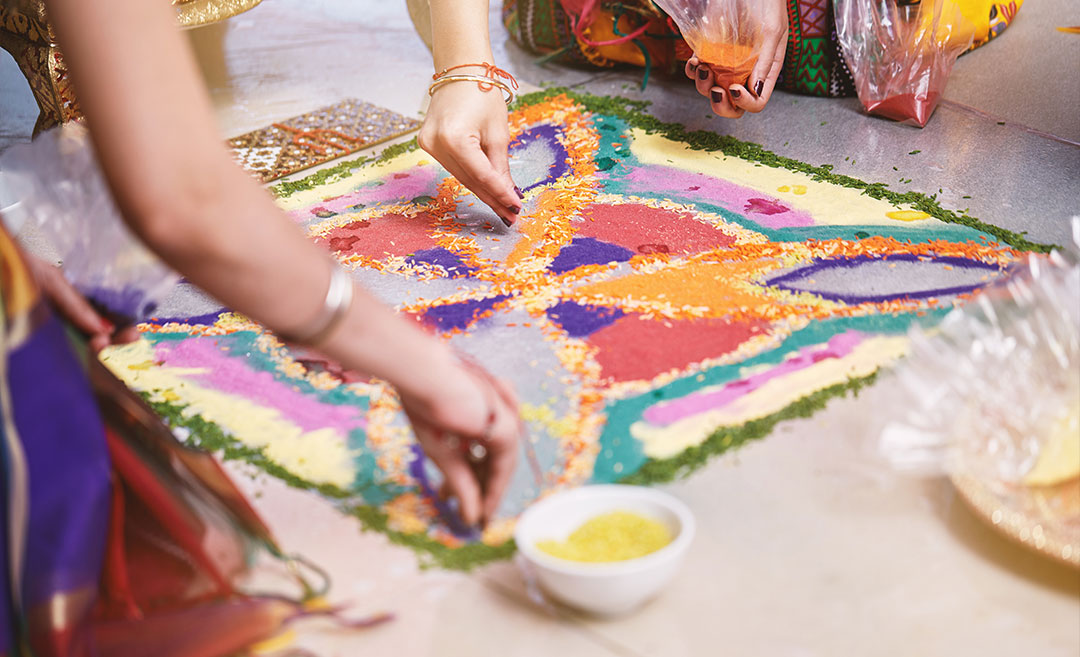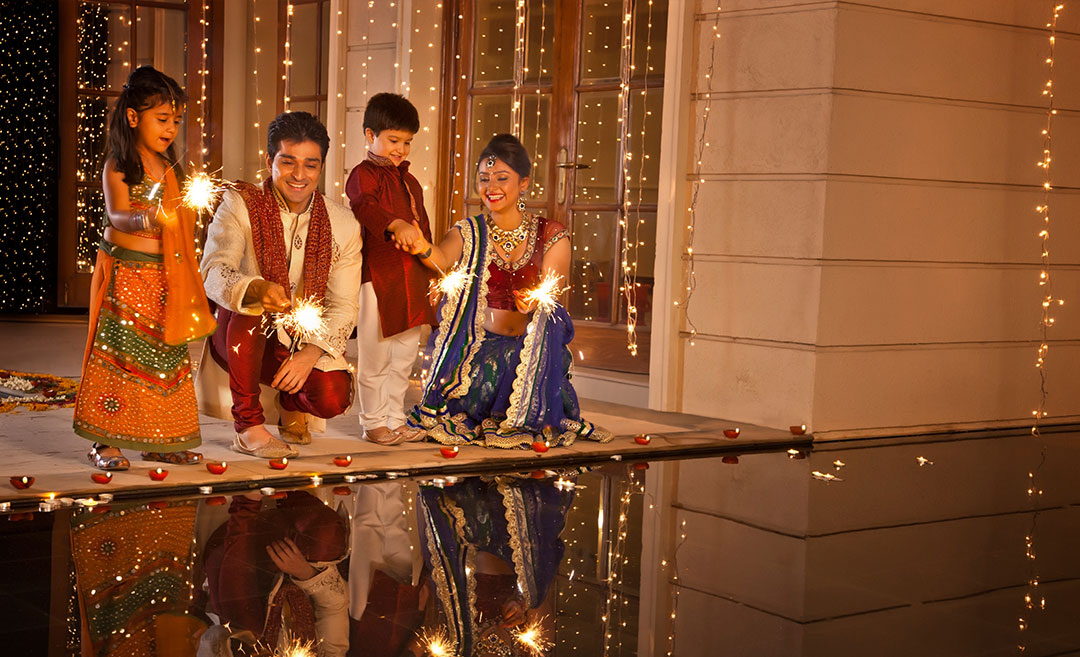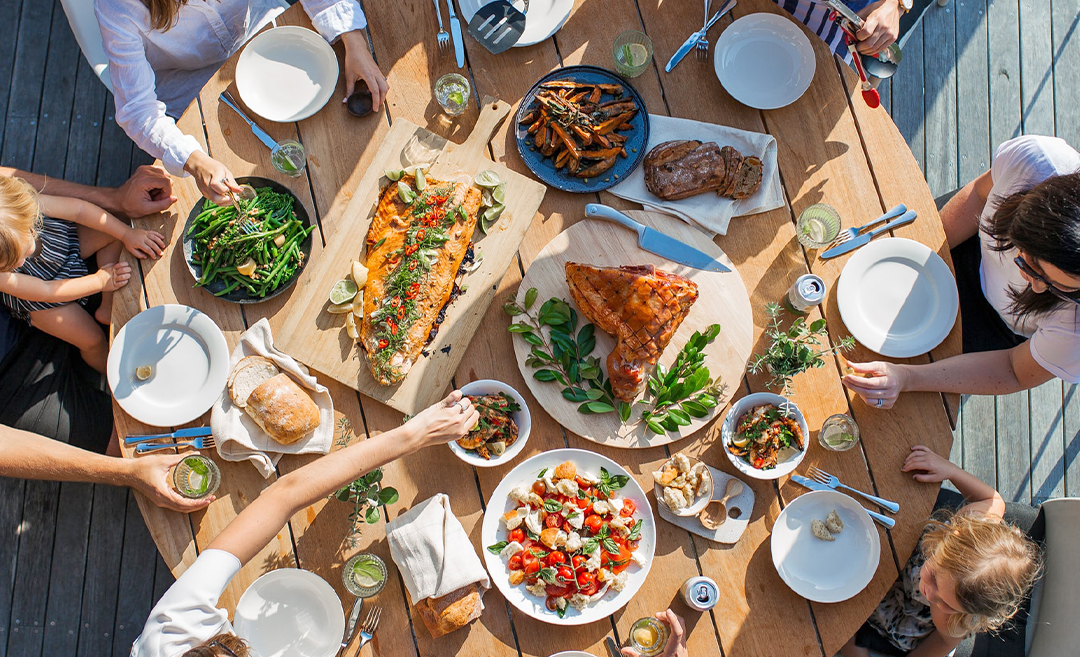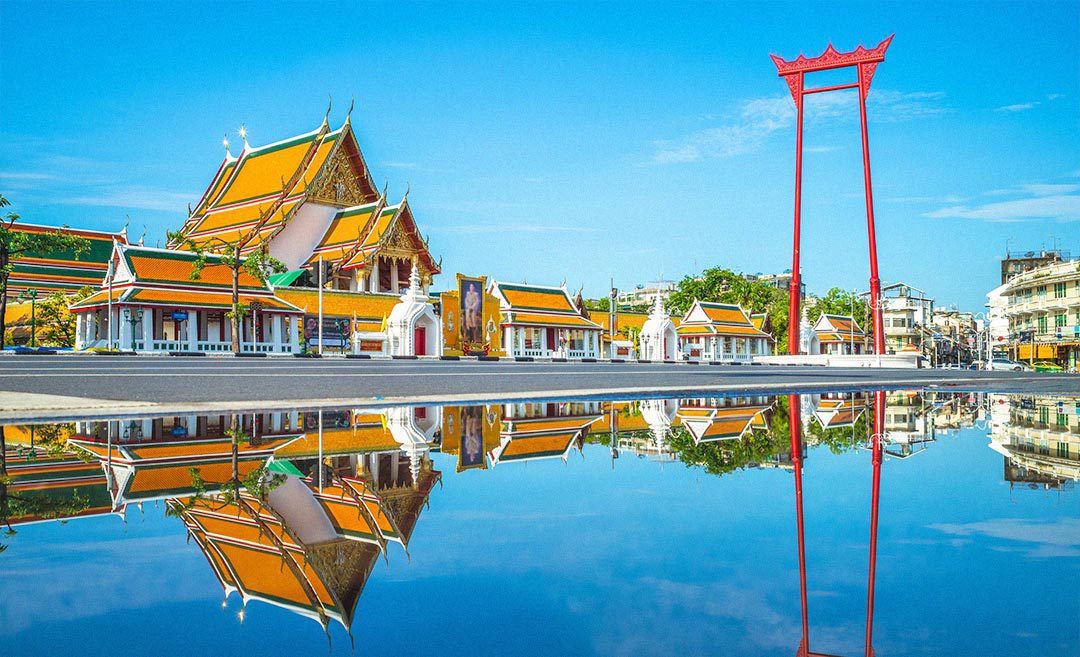As Deepavali draws near, the vibrant art of kolam returns to the forefront of festivities. This ancient Indian tradition, deeply rooted in Hindu celebrations, has also become a cherished part of Malaysia’s cultural landscape. More than just a decorative practice, it’s a rich art form steeped in symbolism, spirituality, and artistic expression.
The history & artistry of Kolam
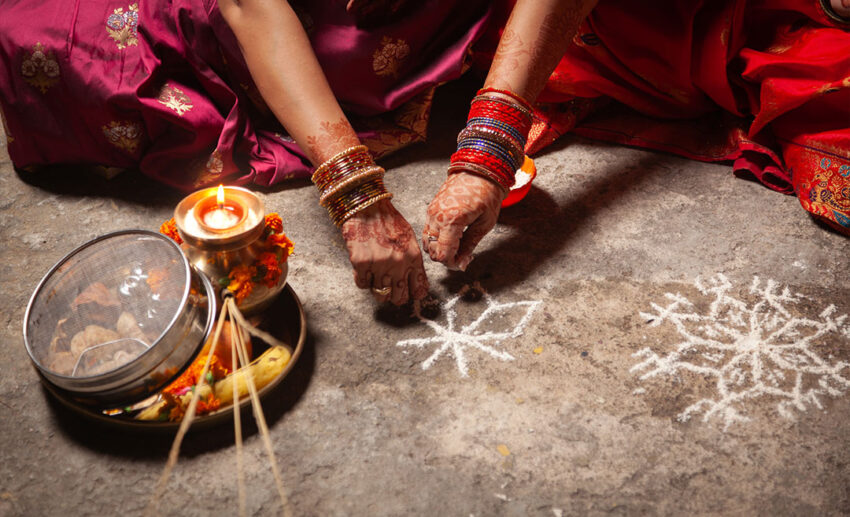
Kolam, with its roots in Tamil Nadu, South India, is a beautiful geometric floor art form where lines and curves come together to create intricate designs around a grid of dots. In Tamil, ‘kolam’ translates to ‘beauty’ or ‘form,’ which perfectly describes these mesmerising creations made with rice flour, chalk, or coloured powder.
The most basic form, pulli kolam, begins with a grid of dots as the foundation. From there, artists connect the dots, turning them into hypnotic, symmetrical patterns. What makes kolam truly remarkable is the precision and fluidity with which these designs come to life—often in a matter of minutes, all drawn freehand.
Traditionally, women have passed this skill from one generation to the next, showcasing not only their artistic talent but also their deep understanding of geometry and balance. It’s an art form that has thrived for centuries.
Symbolism and significance
Beyond its aesthetic appeal, the kolam holds profound cultural and spiritual significance. In many Hindu homes, drawing a kolam outside the entrance every morning is a ritual meant to invite prosperity, particularly in welcoming Lakshmi, the Goddess of Wealth. It also serves to ward off evil spirits, acting as a spiritual shield.
At its core, the kolam embodies the philosophy of impermanence. The act of creating these intricate patterns each day, knowing they will fade or be swept away, reflects life’s transient nature.
Common motifs for kolams include:
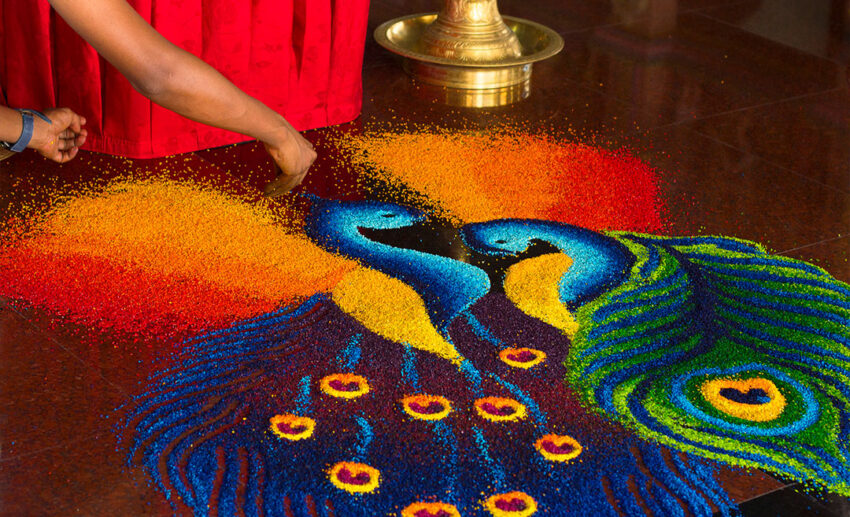
- Lotus flowers: Representing purity and spiritual awakening
- Peacocks: Symbolising beauty and grace
- Mangoes and other fruits: Denoting abundance and fertility
- Lamps: Particularly popular during Deepavali, symbolising light and knowledge
Materials and usage
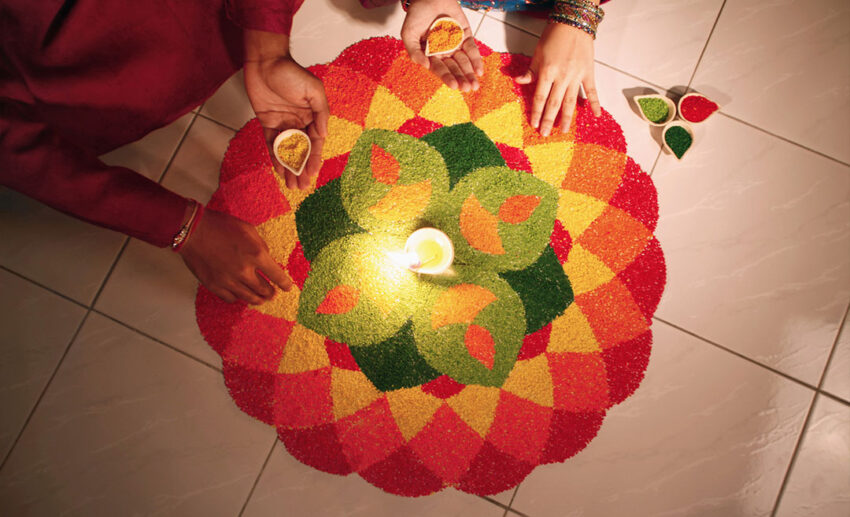
During festivals and special occasions, kolams become even more than pleasing to the eye. For instance, during the harvest festival of Pongal, kolams often incorporate motifs of sugarcane and other vegetables, celebrating the bounty of nature.
Traditionally, rice flour was used for the designs, making them biodegradable and also serving as food for small animals like ants and birds. This practice aligns with the Hindu principles of Dharma or Bhutayajna—the act of feeding and caring for other living beings. This practice reflects a harmonious relationship with nature, a value deeply ingrained in Hindu philosophy.
Today, while coloured powders are common, many advocate for a return to natural, eco-friendly materials to preserve the kolam’s roots in environmental sustainability.
Socially, the daily ritual of creating kolam fosters community bonds. Neighbours often admire and discuss each other’s designs, creating opportunities for interaction and shared appreciation of art.
Kolam in Malaysia: A Deepavali spectacle
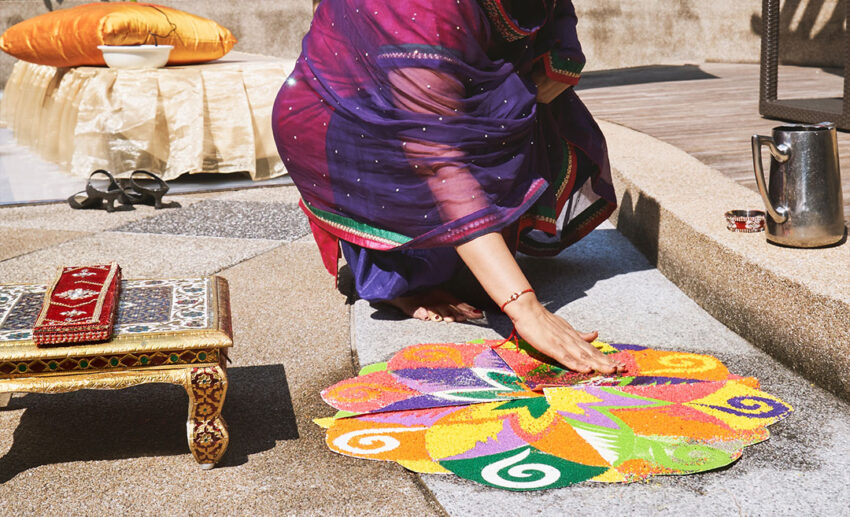
In Malaysia, kolam has found a special place during Deepavali celebrations, particularly in public spaces like shopping malls and temples. While kolam’s roots remain firmly Indian, the art form has adapted to reflect Malaysia’s multicultural spirit. Local motifs and themes are often woven into designs, resulting in a distinctive fusion that represents the diversity of the country.
This blend of old and new, local and foreign, makes the Malaysian kolam a true symbol of the nation’s cultural mosaic.
Preserving tradition in a modern world
As with many traditional art forms, kolam faces challenges in the modern world. The fast-paced urban lifestyle often leaves little time for daily kolam practice. However, efforts are being made to preserve and promote this art form. Kolam competitions, workshops, and festivals help keep the tradition alive and introduce it to younger generations.
Moreover, the adaptability of kolam has allowed it to find new expressions in contemporary art and design. From inspiring textile patterns to influencing modern graphic design, the essence of kolam continues to evolve while maintaining its cultural roots.
As Deepavali approaches, the kolam remains a vibrant symbol of Malaysia’s festive seasons. It embodies the victory of light over darkness and reflects the beauty of spiritual practice, environmental mindfulness, and cultural diversity.
The Hindu tradition of kolam in Malaysia captivates both locals and visitors. These intricate designs, created and admired in public spaces, serve as living expressions of a tradition deeply rooted in spirituality yet continually evolving.

